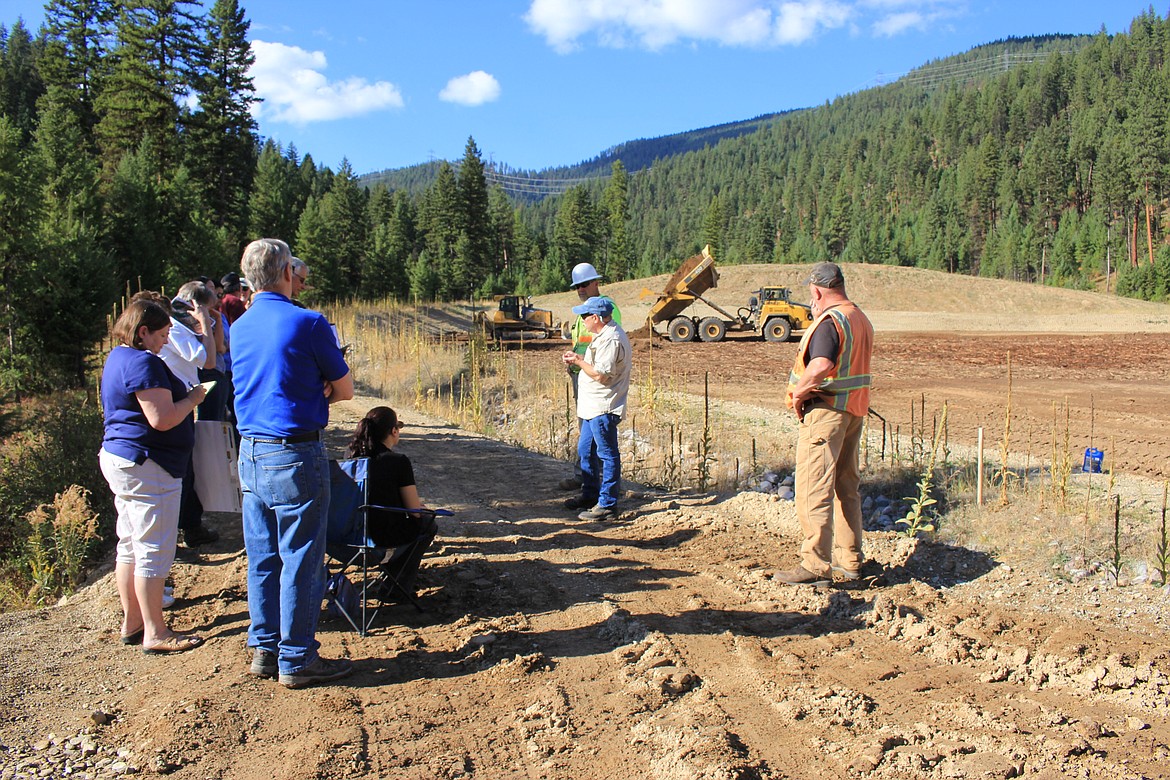Flat Creek superfund site nears completion
After nearly 15 years the Flat Creek-Iron Mountain Mine superfund cleanup site is coming to an end. A handful of local residents, along with personnel from the Department of Environmental Quality, Forest Service, and Environmental Protection Agency gathered for a site tour on Wed. Sept. 27. With weather permitting, they hope to have this phase of the cleanup completed by mid-November.
Nearly all of the contaminated soil along Flat Creek and at the abandoned mine site has been removed and the water quality is good according to project manager, Joel Chavez. The mine, located approximately 10 miles up Flat Creek Road northeast of Superior, has been on the National Priority Superfund since 2002.
Looking out over the small stream trickling down the mountain, patches of trees and grass continue to line the banks. From the dirt road to the stream, the ground looks like a farmer’s field dug with deep rows of loose soil by a chisel plow. Waiting for reseeding with native grasses and trees.
There are still some tailings along the creek bed but the decision was made to keep some of the vegetation along the stream to prevent erosion. Eventually the minimal amount of contaminates will wash away.
There is about a quarter of a million dollars left in the Montana Environmental Trust fund which will be used for reseeding, trees and weed control said Chavez. The funds are the result of a $1.9 million settlement agreement by the US Bankruptcy Court and previous mine owner ASARCO.
There also is still some arsenic contamination at the mine adit located a few miles up the road from the old mill site. However it has a slow water flow and it should be low maintenance to capture and treat it said Chavez, “we won’t need to break the bank to clean it up.”
That portion of the cleanup will be turned over to the Environmental Protection Agency and they will conduct further testing and analysis to determine the best way to proceed.
Down the road a few miles is the repository which is a field where approximately 92,000 cubic yards of contaminated tailings were hauled by truck. The area will be covered with two feet of gravel and then two more feet of soil and then reseeded. Once it has been regrown the area can be walked on but no motorized vehicles will be allowed.
As the group looked over the field and watched as a truck dumped another load of dirt into the nearly full area, Bob Wintergerst, a USFS environmental engineer, discussed what was remaining to be done along the creek bed. On a map he showed an area above the water tank where there was still a massive deposit of tailings on forest service land.
“There must have been a dam or something that created deposit which is about 5,000 cubic yards,” he said.
They partnered with Darren Haskins, and Trout Unlimited to experiment with smaller equipment to get into some of the remaining areas. Hoping to cause the least amount of damage along the pockets of remaining contaminated areas. Wintergerst said they are also conscious about cultural items in the area and will try to keep those intact.
The water tower located down the hill from the repository holds a backup water supply for the town of Superior. The flow into the tank was cut off because of contamination at the infiltration system. In the case of an emergency, water from that system can be used for a short period of time. In the long run, Wintergerst said they hope to locate another water source, possibly in the Wood Gulch area.
Along the roughly six miles of creek bed that winds up the dusty road are patches of biodegradable fabric. The fabric will hold the soil in place as seeds planted underneath sprout and grow new vegetation. Clay soil was brought in from St. Regis is ideal and holds water really well.
The Iron Mountain Mine has been around since 1909 and saw continuous production until 1930, with peaks in the mid-1910s and 1920s. Since then, lessees have from time to time, opened the property. From 1909 to 1953, it produced 7,535,084 pounds of zinc, 5,385,741 pounds of lead, 5,274 pounds of copper, 389,355 fine ounces of silver, and only 19 fine ounces of gold. A lead-antimony sulfosalt in the zinc vein of the Iron Mountain Mine was described as unique in the veins of this area.





